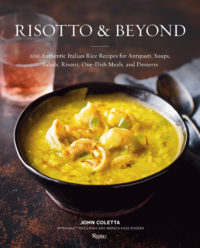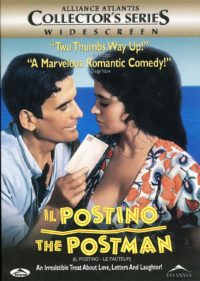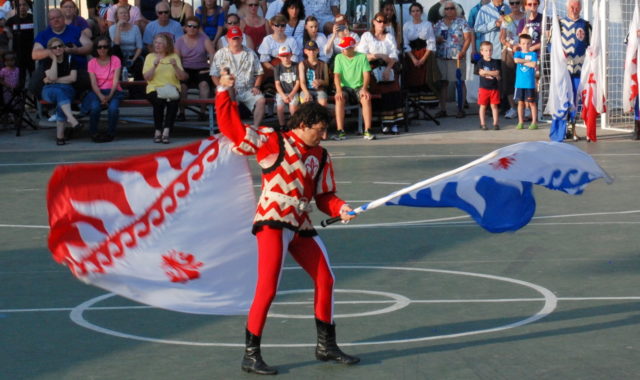I envy the first Italian Americans: those brave souls who catapulted themselves into the unknown and stared down countless hardships to create a better life for their families in a strange, new land. They brought with them little more than the shirts on their backs and the culture that shaped them, but that was more than enough.
Settling with their paesani in ethnic enclaves, they reconstructed that culture from the ground up, celebrating La Vita Italiana in their homes, businesses, places of worship and wherever else they gathered.
 Family recipes were prepared by heart in their kitchens, canzoni popolari flowed from their Victrolas, their ancestral tongue was spoken in clubhouses and on street corners, prodotti italiani were sold in shops down the block, and they turned out in droves each year to honor patron saints who had watched over them for centuries.
Family recipes were prepared by heart in their kitchens, canzoni popolari flowed from their Victrolas, their ancestral tongue was spoken in clubhouses and on street corners, prodotti italiani were sold in shops down the block, and they turned out in droves each year to honor patron saints who had watched over them for centuries.
Drawing on these deep roots, our community flourished, spreading out across the Chicago area, rising through the social and economic ranks, and fully embracing the American Dream. But the torch of italianità flickered and dimmed as it passed from generation to generation.
La bella lingua was largely abandoned during World War II as we did battle with Mussolini’s troops. Little Italys emptied as returning soldiers pursued higher educations and bought suburban homes on the GI Bill. The sons and daughters of Italian immigrants married the daughters and sons of other immigrant groups. And the scores of patron saint celebrations, once the pinnacle of entertainment, dwindled in the face of rising competition from countless live and electronic alternatives.
 Even Italy morphed into something our grandparents wouldn’t recognize. It battled its way out of the Middle Ages in the last half of the 20th century to become a beacon of innovation and style, losing touch with its peasant roots as surely as we did on this side of the Atlantic.
Even Italy morphed into something our grandparents wouldn’t recognize. It battled its way out of the Middle Ages in the last half of the 20th century to become a beacon of innovation and style, losing touch with its peasant roots as surely as we did on this side of the Atlantic.
A host of societal and global forces have buffeted our most cherished traditions and rocked our ethnic identity to its core. So how does one live La Vita Italiana as a second-, third- or fourth-generation American of Italian descent?
Exactly as we please, I’m happy to say. As it turns out, the very forces that once separated us from our legacy now reconnect us in ways unimagined by our ancestors.
Specialty stores across Chicagoland brim with Italian products; hundreds of restaurants serve up dishes with roots throughout the Boot; bookstores teem with titles that plum the depths of our history, cuisine and heritage; performers from Italy regularly grace the Windy City with their talents; dozens of local festivals showcase our traditions for all to enjoy; and classes at Casa Italia and the Italian Cultural Institute make it easy to embrace la lingua nostra.
 And what we can’t easily access by car is only a mouse click away. Through the magic of the internet, we can learn how to play bocce or make wine, buy a Zucchero CD or Deruta pasta bowl, enjoy a recent Sanremo performance or a vintage pop video, brush up on our language skills or plan our next trip to Italy, or access an endless stream of subtitled cinema.
And what we can’t easily access by car is only a mouse click away. Through the magic of the internet, we can learn how to play bocce or make wine, buy a Zucchero CD or Deruta pasta bowl, enjoy a recent Sanremo performance or a vintage pop video, brush up on our language skills or plan our next trip to Italy, or access an endless stream of subtitled cinema.
Part of the process of reclaiming our identity entails reaching back to prepare pasta, make soppressata, play scopa, plant a garden, or walk in procession like Nonna and Nonno did. And the other part requires reaching out toward all the wonderful things that modern Italy has to offer. And all of it can satisfy the soul in ways that American culture is hard pressed to match.
With the traditions of our ancestors as our foundation, and a whole world of italianità at our fingertips, we can build a sense of ethnic identity that reflects not only where we came from but who we hope to become.
It’s amazing how very Italian an American life can be. Next month, I’ll share some of my favorite Italian things.
 Fra Noi Embrace Your Inner Italian
Fra Noi Embrace Your Inner Italian








